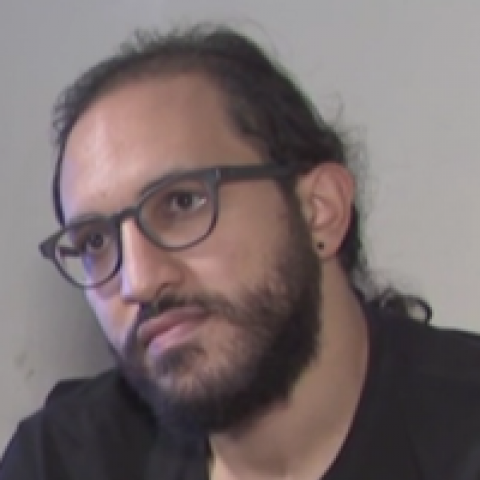Egypt Revolution 2011 and Communications
Communications and online platforms have played very important role during the Egyptian Revolution between all entities and individuals.
The invitation to demonstration started online through Facebook events and Twitter using the hash-tag #Jan25, to demonstrate during the National Police Day 25 January 2011 mainly against corruption, unemployment and torture in Egypt. The invitation spread very widely among the Egyptian netizens and many political groups and parities adopted the invitation and it was spread offline.
Before January 25, the reasons for the demonstrations started to increase and develop quickly until it all was formulated under one umbrella: People Demand Removal of the Regime.
Invitations to the demonstrations with time and locations spread widely using short message service (SMS) and emails. An online platform was also developed to compile chants by Egyptians to make it easier for people joining peaceful assemblies to use the slogans in different ways.
The Front to Defend Egypt Protesters (FDEP), network of more than 30 human rights organization and legal in Egypt to provide informative and legal aid to participants in peaceful assemblies, announced several hotline numbers -as usual- to receive complaints and alerts from individuals using SMS or phone calls.
The government started on 25 January to 6 February its crackdown on communication and online platforms to limit the flow of information, here is the sequence of communication shutdown by the government (approximate figures):
1. Tuesday 25 January 2011 - 01:30pm: some mobile lines shutdown including FDEP hotlines, twitter.com and bambuser.com blocked in Egypt.
2.Tuesday 25 January 2011 - 08:0pm: network coverage in Tahrir Square shutdown.
3.Wednesday 26 January 2011: twitter.com & bambuser.com are accessible (10:30pm), facebook.com is blocked and some mobile lines are re-activated.
4.Thursday 27 January 2011 - 09:40pm: short message service (SMS) & internet connection shutdown (except one internet service provider (ISP) where the government moved on the stock exchange and financials process).
5.Friday 28 January 2011: landlines shutdown in some areas in Cairo, satellite internet connection is interrupted and mobile phone calls are re-activated.
6.Monday 31 January 2011 - 11:30pm: last internet service provider in Egypt shutdown.
7.Wednesday 2 February - 2011, 12:30pm: internet connection is re-activated.
8.Sunday 6 February - 12:35 am: SMS re-activated.
Despite that crackdown, people of Egypt were still able to deliver videos, pictures and thoughts from the demonstrations all over Egypt and it didn’t affect mobilizing people to join peaceful assemblies.
Even after the government blocked facebook.com, twitter.com and bambuser.com many netizens were still able to access those sites using different programs and tools to bypass the censorship. Before the government shutdown the last ISP, activists in Egypt were able to secure several internet access points to send updates, information, pictures and videos from what’s happening. Activists also built a media center camp in Tahrir Square to gather multimedia from demonstrators then uploading them online through the access points.
The day when the last ISP was shutdown, many friends and companies from different countries tried to help by making our voices heard worldwide. Bambuser.com, an open-source application to live-stream online, announced that they created a special channel http://bambuser.com/egypt to gather all live streams in one page. Our friend John Scott-Railton, launched Speak to Tweet service and created Jan25voices account on Twitter on 28 January, John just used his laptop and cell-phone to call us here in Egypt and record our testimonies & thoughts and information we would like to share and then make these records available online. Google contributed by a Crisis Response page for Egypt and also created a Speak to Tweet service account on 30 January. YouTube helped by highlighting the latest footage on their news and politics channel.
What Bambuser.com and John Scott-Railton was very useful especially during the crackdown on journalists, media personages and the blackout the government was trying to do because at some times we were the only people as individuals who can report, take pictures and provide a live-stream.
The main lessons I learned from this experience is that governments cannot totally silence voices of people and actually the more governments crackdown on people; people become more creative and stronger in fighting back.
People should not be afraid of their governments; governments should be afraid of their people, as one of the demonstrators wrote on a banner in Tahir Square.
- Published at Aftenposten.




